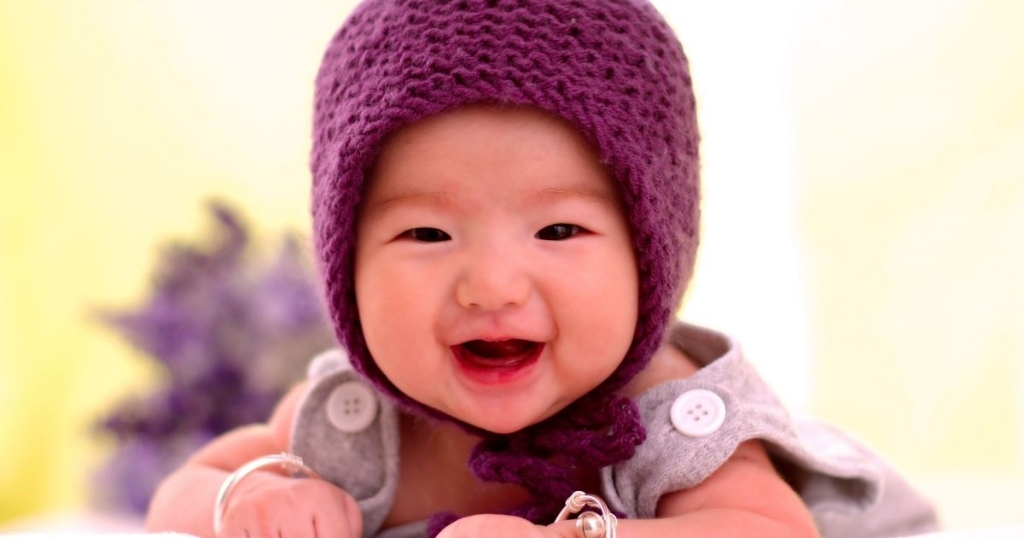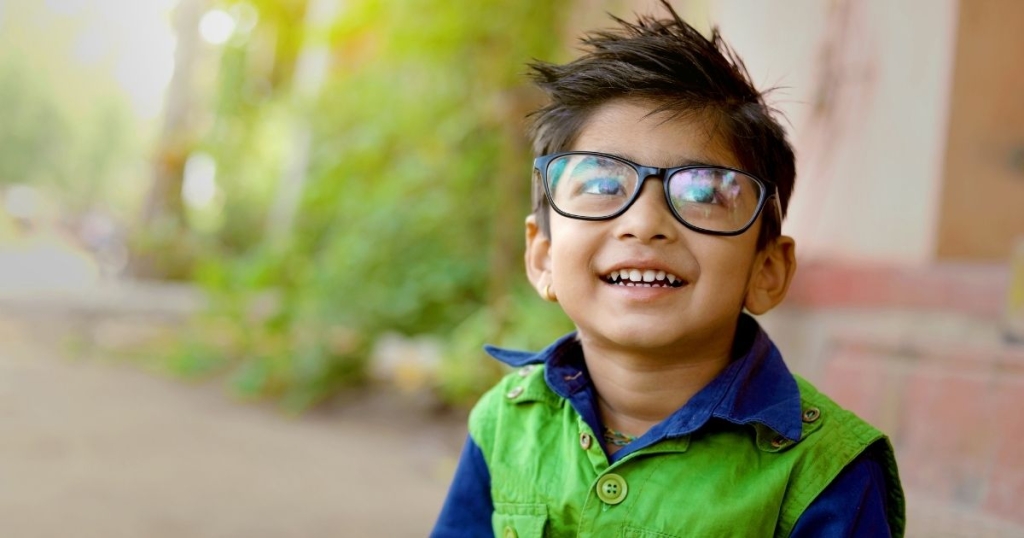
Authors: Cara Piccoli, MD; Sonika Agarwal, MBBS, MD, Children’s Hospital of Philadelphia
Reviewed: August 2021
SUMMARY
Agenesis of the corpus callosum (ACC) is a rare birth defect. In this disorder, the major connections between the two sides of the brain have not developed. When these connections are partially developed, the terms “hypoplasia” or “dysgenesis” are usually used instead.
Some children have no symptoms. Others develop various issues, including:
- Learning difficulties
- Seizures
- Vision issues
Usually, the cause of ACC is unknown. However, a minority of cases stem from genetic mutations or injury during pregnancy.
JUMP TO
Disorder Overview
DESCRIPTION
ACC is a rare birth defect. In ACC, the structure connecting the two halves of the brain has not formed properly. The outlook for children with ACC depends on:
- Severity of the condition
- The presence of other brain abnormalities


Children who have ACC but no other brain abnormalities may have no symptoms. However, more severely affected children can suffer from seizures, learning difficulties, vision problems, and other issues.
Definitions
- Corpus callosum (CC). The structure connecting the brain’s two hemispheres, or sides.
- Hypoplasia. An abnormally thin formation of the CC.
- Dysgenesis. A malformation of the CC.
- Agenesis of the Corpus callosum (ACC). A complete absence of the CC.
- Isolated ACC. Problems with the CC when the rest of the brain is normal.
Note: For simplicity, this page refers to all disorders of corpus callosum formation as ACC.
SIGNS AND SYMPTOMS
Diagnosis
Prior to Birth
ACC can sometimes be diagnosed on an ultrasound of a fetus before birth. MRI (magnetic resonance image) of the fetus can confirm these findings. A prenatal MRI can also provide more details on:
- Whether or not there are other brain abnormalities
- The severity of ACC or other abnormalities
After Birth
Often, however, ACC is not seen on a prenatal ultrasound. In these cases, ACC may be detected after birth using imaging. Imaging that can find ACC after birth include:
- Ultrasound
- CT (computed tomography) scan
- MRI
MRI may also be used in infants for other reasons. It can help doctors to better understand symptoms. It can also look for other causes of symptoms.


Symptoms
Some cases of ACC are mild. These cases do not cause any symptoms. Other cases cause symptoms, but not right away. When the symptoms are delayed, there can be a delay in diagnosis, too.
Symptoms of ACC can include:
- Microcephaly. This is when the head is abnormally small.
- Macrocephaly. This is when the head is abnormally large.
- Developmental delays. There may be delays in reaching milestones such as:
- Rolling over
- Sitting
- Standing
- Walking
- Talking
- Learning
- Using hands
- Problems with motor control and movement. This can include:
- Muscles that are too tight or too floppy
- Problems with balance and eye-hand coordination
- Unpredictable movements
- Problems with speech. This can include:
- Problems forming words
- Problems understanding language
- Learning disabilities. Some children will need extra help at school or to be enrolled in special education.
- Issues with vision and hearing. Some children will require vision or hearing therapy, hearing aids, or special accommodations at school.
- Epilepsy. Children may develop seizures requiring medication, procedures and/or a specialized medical diet.
- Facial differences. Some children may not look like their parents due to abnormal face development. Some may have features common to certain genetic syndromes.
CAUSES
In most cases, the cause of ACC is unknown.
Genetic Causes
DIAGNOSIS AND LABORATORY INVESTIGATIONS
Several kinds of lab tests can help in understanding ACC.
Brain Imaging
Genetic Testing
Genetic testing may be helpful in determining if there is a genetic cause for ACC. Understanding a genetic cause can help guide family planning. It may also help specialists determine a child’s risk of developing complications.
There are several genetic tests available. Often, more than one test is recommended. Blood and saliva are the most common samples used for genetic testing.
Other Testing
Various blood and urine testing may also help find problems associated with ACC.
Sometimes, ACC is related to problems with metabolism. Metabolism is related to the way nutrients and enzymes are used for energy and body functions. Blood and urine tests can help detect problems with metabolism.
They may also be used to:
- Monitor the safety of medication
- Check nutritional status
- Look for infections
TREATMENT AND THERAPIES
There is no cure for ACC. Treatment depends on disease severity. Children with mild cases may not require treatment. Children with more severe cases may need help from:
- Child neurologists, or brain specialists for children
- Developmental pediatricians, who can assess language, learning, behavior, and development
Some of the treatment options include:
Medication
Surgery
Surgery is occasionally recommended for patients with ACC. Surgery may be used for any of the following:
- Feeding tube placement
- Muscle tightness
- Seizures not responsive to medication (i.e., epilepsy surgery to remove the seizure focus)
- Hydrocephalus, which is caused by fluid accumulation in the head. This may include the placement of a ventriculoperitoneal (VP) shunt.
Physical and occupational therapy
Speech and swallowing therapy
Wheelchairs, walkers, and other mobility equipment
Feeding equipment and specialized diets
OUTLOOK
There is no cure for ACC. The severity of ACC can differ a lot from case to case. It depends on the amount of the brain involved. Some children with partial ACC never develop symptoms. Other children with ACC have difficulty:
- Meeting developmental milestones
- Participating in regular classrooms
- Having a job
- Living independently


Early and consistent therapy may be helpful for some children. Important therapies include physical, occupational, speech, and vision therapies. Many will need daily medication to prevent seizures or treat other complications. Some will benefit from a feeding tube for extra nutrition.
ACC is often found alongside hydrocephalus. This is a buildup of fluid around the brain. A shunt may be needed to relieve pressure in the head for children with hydrocephalus.
RELATED DISORDERS
ACC is a part of many genetic disorders. Examples include:
- Aicardi syndrome
- Andermann syndrome
- Meckel-Gruber syndrome
- Optiz G syndrome
- Sotos syndrome
- Wolf-Hirschhorn syndrome
ACC can occur with other brain abnormalities, including:
- Hydrocephalus. This is an abnormal buildup of the fluid surrounding the brain. It causes high pressure in the brain.
- Neuronal migration disorders. These occur when there are problems with development of the brain during pregnancy.
- Chiari malformation. In this condition, the bottom part of the brain extends into the spinal canal. Some patients never have symptoms.
- Spina bifida. In this condition, there is abnormal development of the spinal cord.
- Cerebellar hypoplasia. The cerebellum regulates muscular activity. This occurs when the cerebellum does not form properly.
- Holoprosencephaly. In this condition, the brain does not split into two halves. It is partially or fully fused in the midline.
Resources
Organizations
National Organization for Disorders of the Corpus Callosum
The National Organization for Disorders of the Corpus Callosum (NODCC) is a 501(c)(3) nonprofit established in 2003 for individuals with disorders of the corpus callosum, their families and professionals. Their mission is to enhance the quality of life and promote opportunities for individuals with disorders for the corpus callosum.
The NODCC has become the leading organization for disorders of the corpus callosum seeking to raise the profile, understanding and acceptance of these disorders through education, networking, advocacy, and being a catalyst for research. NODCC provides:
- Resources and support for individuals, family members, and professional audiences through a new Resource Directory, Parent to Educator communication materials, printable brochures, helpful links, and suggested reading materials.
- Twice-yearly grants to families and individuals that need assistive devices and technologies. Grant applicants must be impacted by a disorder of the corpus callosum.
- Research and medical resources including recently published research and current studies.
- Yearly DCC Awareness Day, local events, conferences, and virtual gatherings for various communities including teens and adults with DCC.
- Collaboration and partnerships with related organizations.
- Information on the behavioral characteristics related to DCC.
Publications
JCN: NICU Series- Agenesis of the Corpus Callosum
Podcast from SAGE Neuroscience and Neurology/Journal of Child Neurology (JCN). Dr. Sonika Agarwal of Children’s Hospital of Philadelphia talks about Agenesis of the Corpus Callosum.
Child Neurology Foundation (CNF) solicits resources from the community to be included on this webpage through an application process. CNF reserves the right to remove entities at any time if information is deemed inappropriate or inconsistent with the mission, vision, and values of CNF.
Research
ClinicalTrials.gov for Agenesis of the Corpus Callosum (birth to 17 years)
These are clinical trials that are recruiting or will be recruiting. Updates are made daily, so you are encouraged to check back frequently.
ClinicalTrials.gov is a database of privately and publicly funded clinical studies conducted around the world. This is a resource provided by the U.S. National Library of Medicine (NLM), which is an institute within the National Institutes of Health (NIH). Listing a study does not mean it has been evaluated by the U.S. Federal Government. Please read the NLM disclaimer for details.
Before participating in a study, you are encouraged to talk to your health care provider and learn about the risks and potential benefits.
Family Stories
Read stories of hope and inspiration of individuals with disorders of the corpus callosum on the Blog pages of the National Organization for Disorders of the Corpus Callosum (NODCC). By becoming a registered user (free) you can share your story and connect directly with others touched by DCC around the world or perhaps with someone who lives near you.
The information in the CNF Child Neurology Disorder Directory is not intended to provide diagnosis, treatment, or medical advice and should not be considered a substitute for advice from a healthcare professional. Content provided is for informational purposes only. CNF is not responsible for actions taken based on the information included on this webpage. Please consult with a physician or other healthcare professional regarding any medical or health related diagnosis or treatment options.
References
Agenesis of corpus callosum [Internet]. NORD (National Organization for Rare Disorders). 2007 [cited 2021Aug1]. Available from: https://rarediseases.org/rare-diseases/agenesis-of-corpus-callosum
Agenesis of the corpus callosum information page [Internet]. National Institute of Neurological Disorders and Stroke. U.S. Department of Health and Human Services; 2019 [cited 2021Aug4]. Available from: https://www.ninds.nih.gov/Disorders/All-Disorders/Agenesis-Corpus-Callosum-Information-Page
Aicardi syndrome [Internet]. NORD (National Organization for Rare Disorders). 2018 [cited 2021Aug1]. Available from: https://rarediseases.org/rare-diseases/aicardi-syndrome
Andermann syndrome: MedlinePlus Genetics [Internet]. MedlinePlus. U.S. National Library of Medicine; 2020 [cited 2021Aug1]. Available from: https://medlineplus.gov/genetics/condition/andermann-syndrome
Gaillard F, Haouimi A. Dysgenesis of the corpus callosum: Radiology reference article [Internet]. Radiopaedia Blog RSS. 2021 [cited 2021Aug4]. Available from: https://radiopaedia.org/articles/dysgenesis-of-the-corpus-callosum
Meckel syndrome: MedlinePlus Genetics [Internet]. MedlinePlus. U.S. National Library of Medicine; 2020 [cited 2021Aug1]. Available from: https://medlineplus.gov/genetics/condition/meckel-syndrome
Opitz G/BBB syndrome: MedlinePlus Genetics [Internet]. MedlinePlus. U.S. National Library of Medicine; 2020 [cited 2021Aug1]. Available from: https://medlineplus.gov/genetics/condition/opitz-g-bbb-syndrome
Paul LK, Brown WS, Adolphs R, Tyszka JM, Richards LJ, Mukherjee P, Sherr EH. Agenesis of the corpus callosum: Genetic, developmental and functional aspects of connectivity. Nat Rev Neurosci. 2007 Apr;8(4):287-99. PMID: 17375041; https://doi.org/10.1038/nrn2107
Sotos syndrome: MedlinePlus Genetics [Internet]. MedlinePlus. U.S. National Library of Medicine; 2021 [cited 2021Aug1]. Available from: https://medlineplus.gov/genetics/condition/sotos-syndrome
Wolf-Hirschhorn syndrome: MedlinePlus Genetics [Internet]. MedlinePlus. U.S. National Library of Medicine; 2020 [cited 2021Aug1]. Available from: https://medlineplus.gov/genetics/condition/wolf-hirschhorn-syndrome
Thank you to our 2023 Disorder Directory partners:





